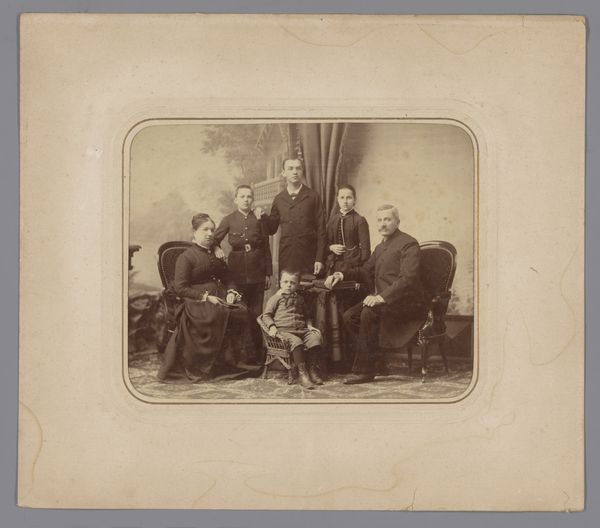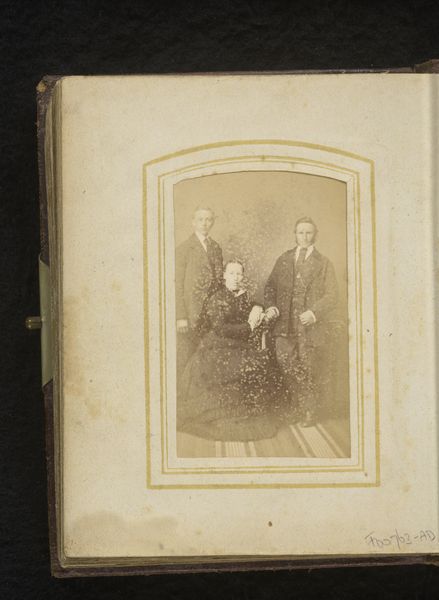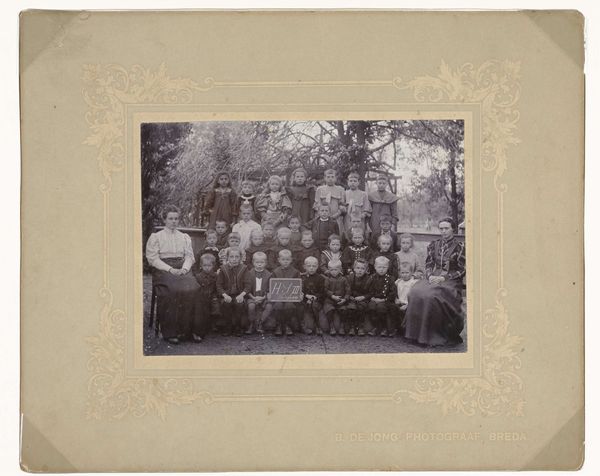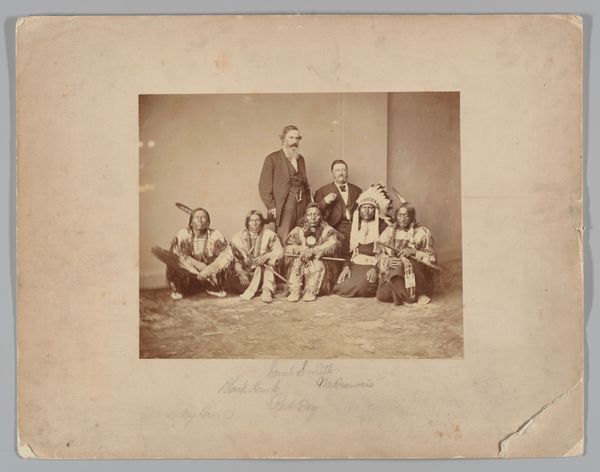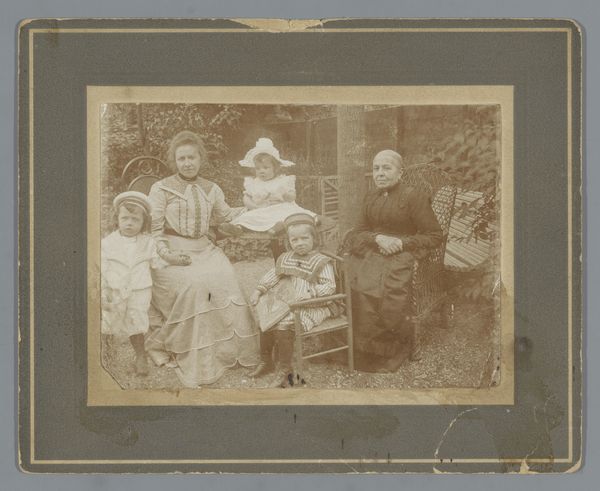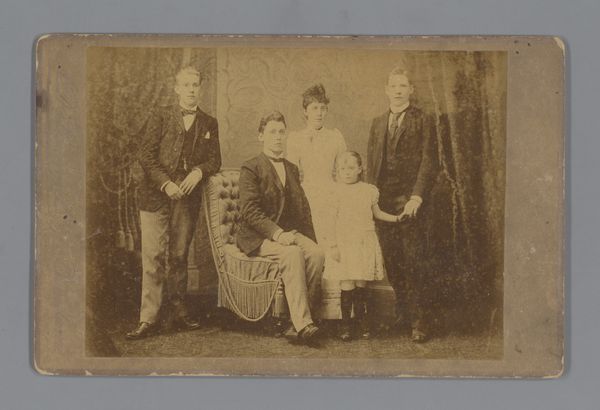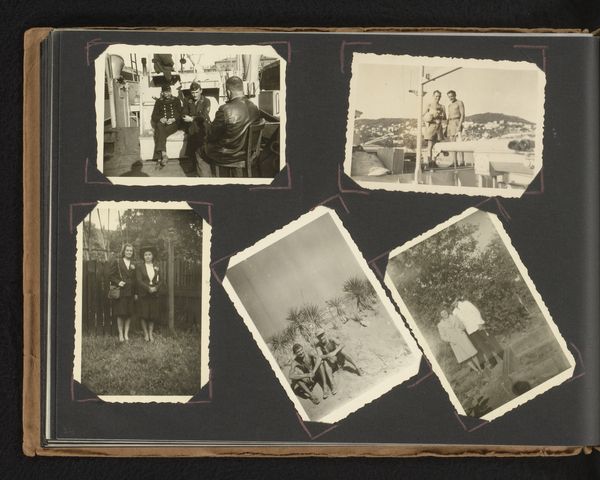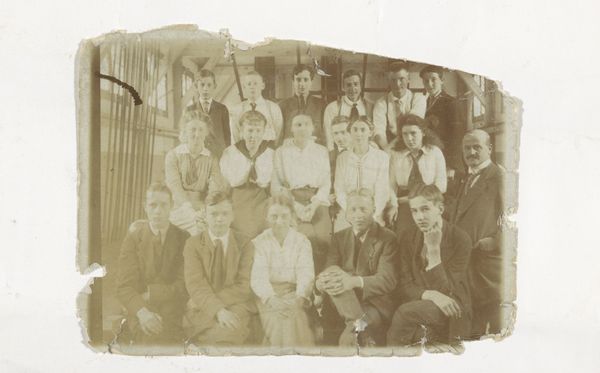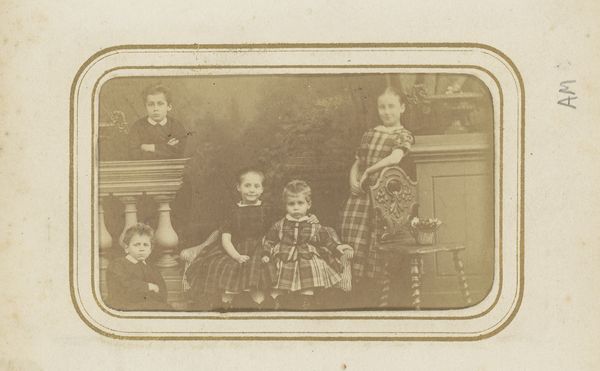
print, photography
#
portrait
# print
#
photography
#
framed image
#
group-portraits
#
genre-painting
#
realism
Dimensions: height 201 mm, width 230 mm, depth 15 mm
Copyright: Rijks Museum: Open Domain
Curator: Let's discuss "Groepsportret van onbekende jongens en meisjes," or "Group Portrait of Unknown Boys and Girls," an 1892 print held at the Rijksmuseum. The name "Bernheim-Wormser" also features on the artwork. What's your initial impression? Editor: A melancholic mood hangs over this group of children. The sepia tones amplify the gravity, almost as if they are bearing the weight of an era. Formally, the composition, although ordered, feels somewhat stiff and rigid, doesn't it? Curator: Precisely. Group portraits like this were more than just documentation. They reinforced social order, especially in educational settings. Notice how some children are seated, suggesting a hierarchy. What societal values do you see reflected here? Editor: I see the interplay of light and shadow creating tonal variation within the limited spectrum—note, for example, the bright smudges on the girl's skirt on the ground and the building's door. Beyond that, this photograph adheres to realist principles by simply documenting its subjects. Curator: These portraits played a crucial role in how society understood childhood and education. They're a cultural touchstone. Editor: This somber atmosphere, as registered through light and materiality, provides viewers with both affect and concept, triggering interpretations that go beyond mere pictorial function. Curator: So, it becomes an object steeped in emotional significance that invites critical inquiry. Editor: Yes, the medium provides material support, facilitating reflection and introspection, don't you think? Curator: The picture becomes a potent cultural symbol of historical experience. Editor: Definitely an interesting piece to consider through the interplay of realism and composition. Curator: It prompts us to ask more complex questions about education, childhood and society in the past.
Comments
No comments
Be the first to comment and join the conversation on the ultimate creative platform.
